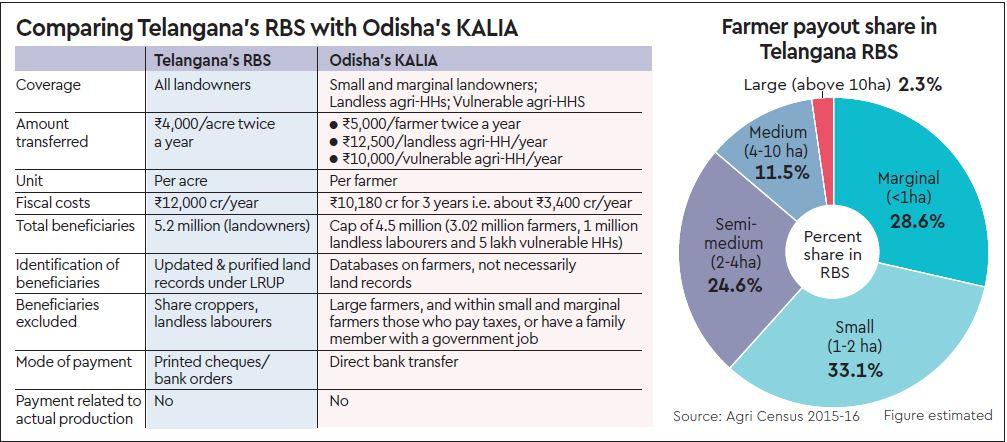900 319 0030
enquiry@shankarias.in
What is the issue?
Union government plans to introduce unconditional direct income transfer (DIT) to farmers based on few state government schemes.
What are the best performing state DIT schemes?
What are the pitfalls in Telangana’s RBS?
How KALIA scheme resolves the issues with RBS?

What are key takeaways from the two schemes?
Source: Financial Express